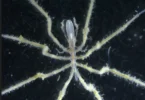Imagine waking up to the cheerful chirping of birds in your backyard. A well-designed bird sanctuary not only provides a safe haven for birds but also adds charm and life to your garden.
Birds play a vital role in maintaining a balanced ecosystem by pollinating plants, dispersing seeds, and controlling insect populations.
Why Create a Bird Sanctuary?

A bird sanctuary not only enhances the beauty of your garden but also provides a safe space for birds to nest, feed, and rest. By supporting birds, you contribute to biodiversity and help control insect populations naturally.
Birds travel incredible distances during migration! Learn about their journeys in our post: The Epic Journeys of Migrant Birds: Nature’s Unseen Travelers.
Choosing the Right Location
Selecting the perfect spot for your bird sanctuary is crucial:
- Quiet and Sheltered – Choose an area away from heavy foot traffic and loud noises.
- Near Trees or Shrubs – Birds need cover for protection from predators.
- Accessible Year-Round – Make sure the location is easy to maintain in all seasons.
Essential Features for Your Bird Sanctuary
To attract a variety of birds, consider adding these key elements:
1. Bird Feeders and Food Sources
Providing food will encourage birds to visit regularly. Choose a mix of:
- Seed Feeders – Great for attracting finches, cardinals, and sparrows.
- Nectar Feeders – Ideal for hummingbirds and orioles.
- Suet Feeders – Helps woodpeckers and other insect-loving birds thrive.
2. Birdbaths and Water Sources
Birds need fresh water for drinking and bathing. Add:
- A Shallow Birdbath – Keep it clean and refill it regularly.
- A Drip Fountain or Small Pond – The sound of running water attracts more birds.
3. Nesting Boxes and Natural Shelter
Encourage birds to settle in your garden by providing safe nesting options:
- Install nesting boxes for species like bluebirds and chickadees.
- Maintain dense shrubs and trees for natural shelter.
- Avoid trimming trees during nesting season to protect eggs and fledglings.
4. Native Plants for Food and Cover
Planting native vegetation creates a self-sustaining habitat. Consider:
- Berry-producing bushes like holly and elderberry.
- Sunflowers and coneflowers for seeds.
- Flowering plants that attract pollinators, benefiting both birds and your garden.
Keeping Your Bird Sanctuary Safe
To protect your feathered visitors, follow these precautions:
- Keep cats and predators away – Install deterrents or place feeders high.
- Clean feeders and birdbaths regularly to prevent disease.
- Avoid pesticides – Use organic gardening methods to keep insects available for birds.
Once your sanctuary is set up, enjoy the experience of birdwatching! Keep a journal of the species you see, take photos, and even join a local birding community.
For a detailed guide on bird-friendly gardening, visit Audubon’s Native Plants Database.








